Last Updated on: 5th August 2024, 02:37 pm
While Monte Albán and Mitla may be the two most-visited archaeological sites in Oaxaca, they’re certainly not the only. Just a short drive from Mitla is Yagul, known for its natural scenery and elaborate palace. Further down the road, meanwhile, is Dainzú, home to a plethora of tombs and pyramid temples.
And elsewhere on the opposite side of Oaxaca is the site of Atzompa. While rather obscure, those who make the journey will be rewarded with well-preserved ruins and beautiful views.
The three sites featured below certainly aren’t the only overlooked Zapotec sites in Oaxaca. There is actually another site near Yagul and Dainzú called Lambityeco, but it’s been closed for years. Other Zapotec sites in the region include Zaachila and San José Mogote.
While both Yagul and Dainzú can be visited on the same day as Mitla, Atzompa requires its own day trip. Learn more below.

Yagul
Located just 10 km west of Mitla on Highway 190, Yagul can easily be visited right after your visit there. If you don’t have a car, you’ll have to walk around 2 km from where the bus drops you off on the highway. Luckily, the surrounding area is beautiful, as it seems to be some type of nature preserve.
While the general area around Yagul was settled as early as 200 BC, things really started to pick up following the 7th century, when the Zapotecs felt the need to build a new hilltop city for better defense. Even today, the hill continues to offer visitors spectacular views.
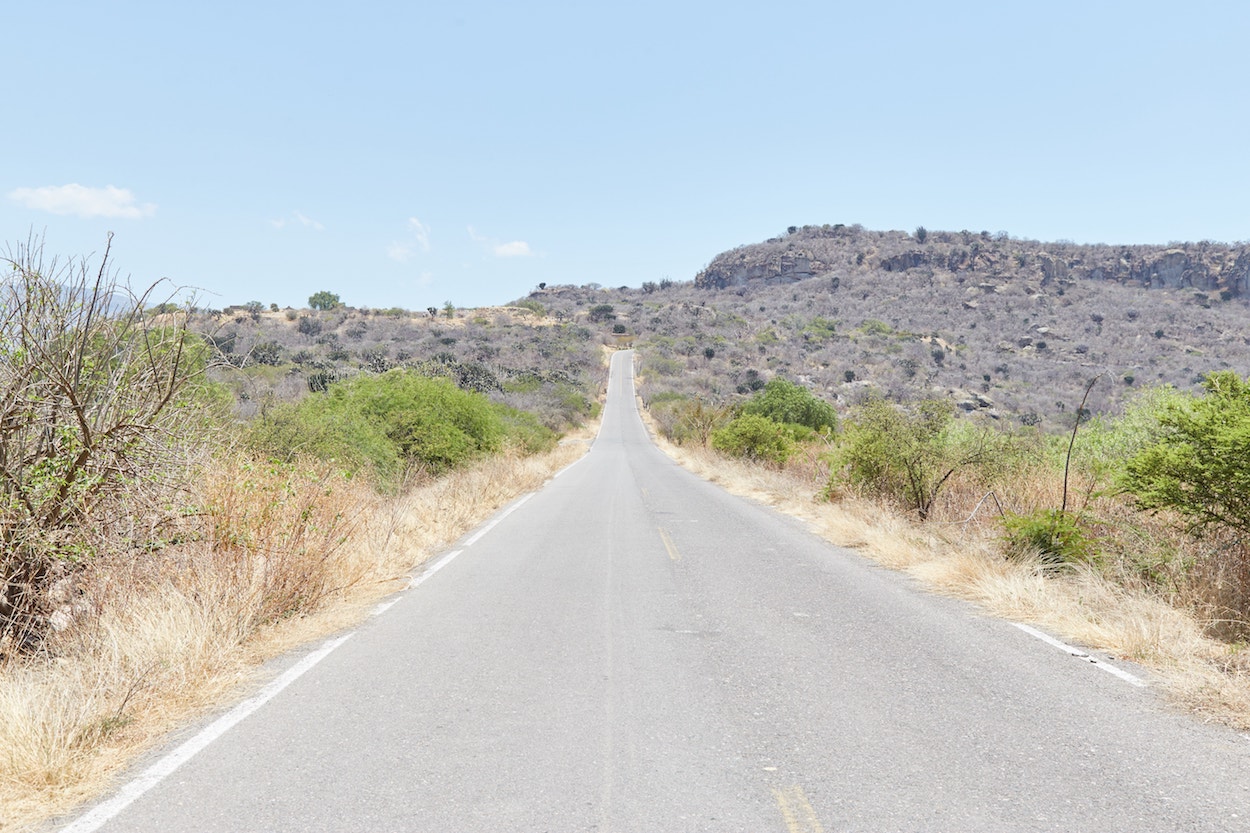
Given their proximity to one another, Yagul maintained a close relationship with Mitla, and the two cities both reached their peak in the Late Postclassic Period (1250-1520 AD).
Following the Spanish conquest, however, Yagul was evacuated, with its inhabitants relocated to the nearby town of Tlacolula.
The first archaeologist to discover Yagul was Adolph Bandelier in 1881, though the site would remain largely untouched until the 1950s. More recently, Yagul was designated a UNESCO World Heritage Site in 2010.
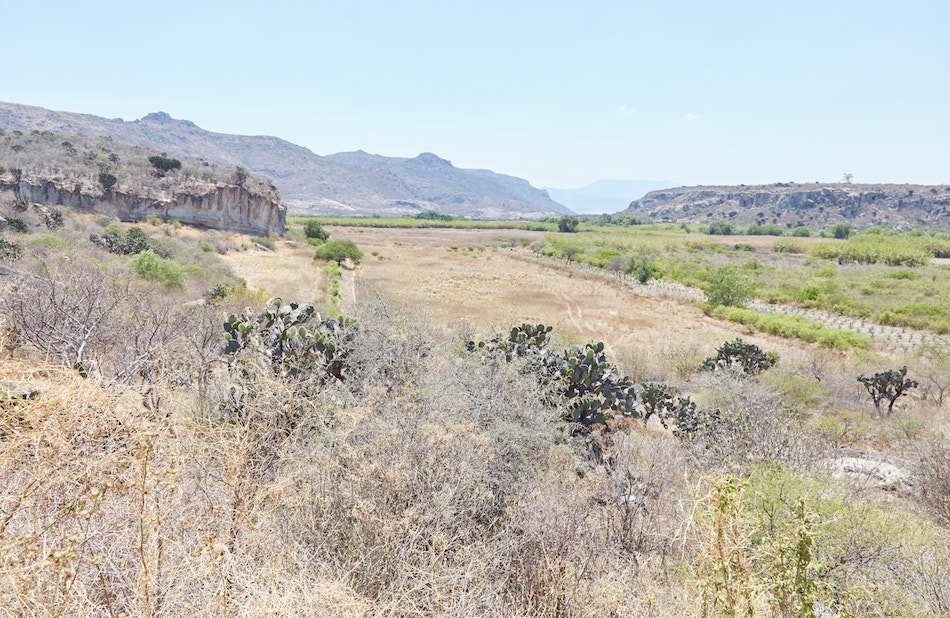

Past the ticket gate, one of the first major landmarks, Patio 4, will be over to your left. The patio is surrounded by four pyramidal temples, while under a protective roof is a relief carving believed to depict a frog.
In the patio’s center, meanwhile, is a triple tomb. But as the area was off-limits at the time of my visit, I could only see it from a distance.

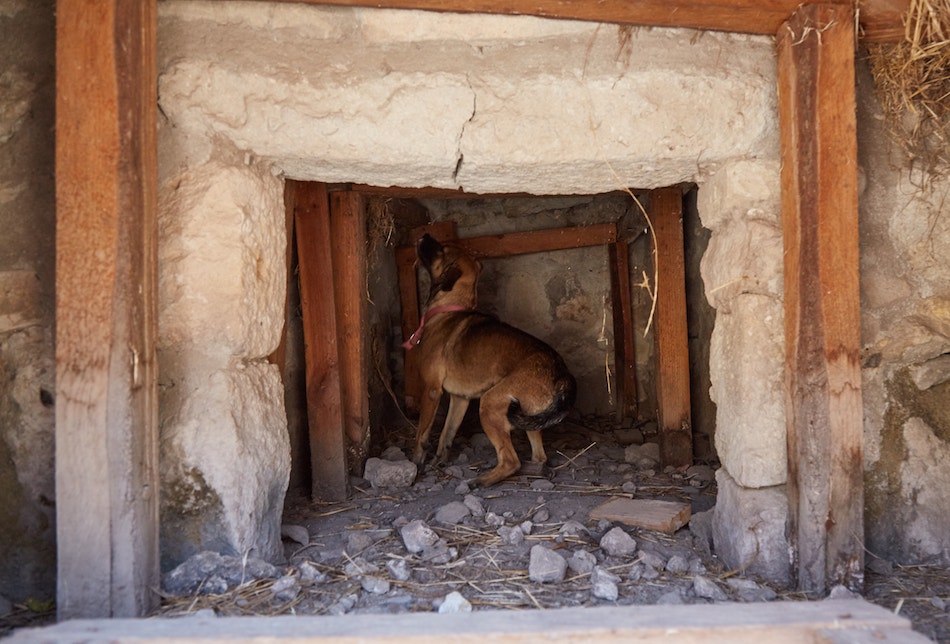
Speaking of tombs, over 30 of them have been found at Yagul overall. And as at neighboring Mitla, the main deity worshipped here was Coque Cehuiyo, Lord of the Underworld.
During my visit, a dog that I’d met and fed on the walk over followed me to the site, remaining by my side throughout my tour of the ruins. I dared not tell her that at Yagul, the ancient Zapotecs were known to sacrifice dogs and turkeys to Coque Cehuiyo!
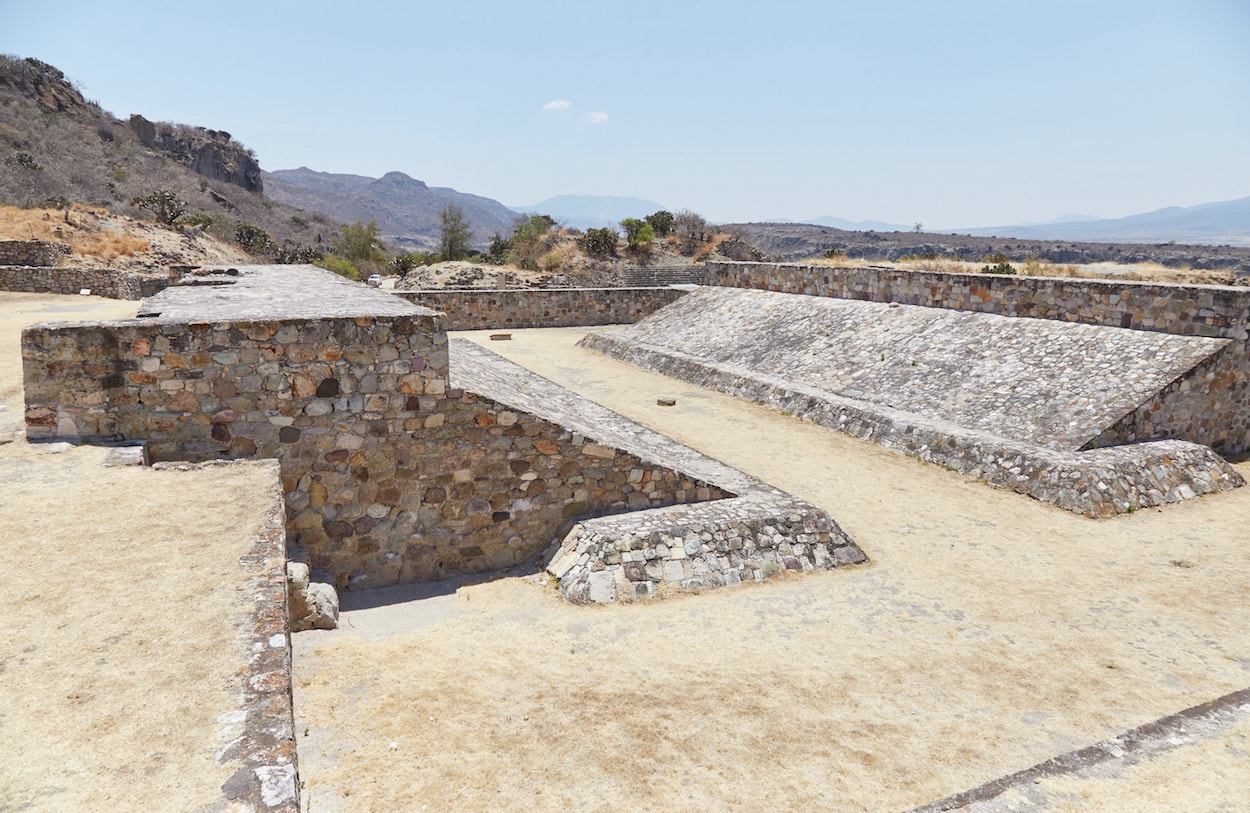
Yagul’s Ball Court is the largest one in the region, and possibly one of the largest in all of Mexico. It maintained the mysterious Zapotec trend, however, of not using rings on its side walls.
Clearly, the Mesoamerican Ball Game was played with different rules from region to region.
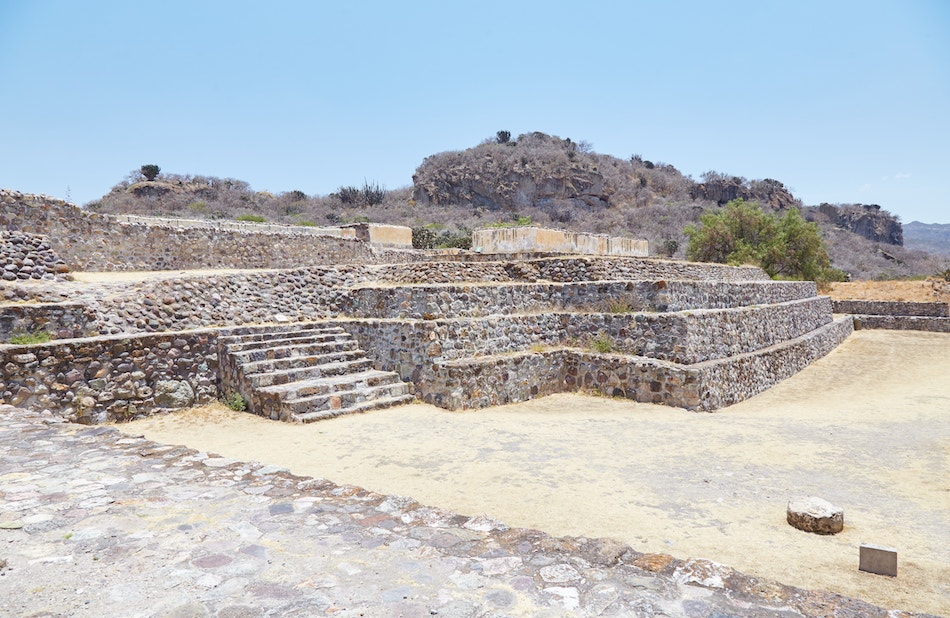
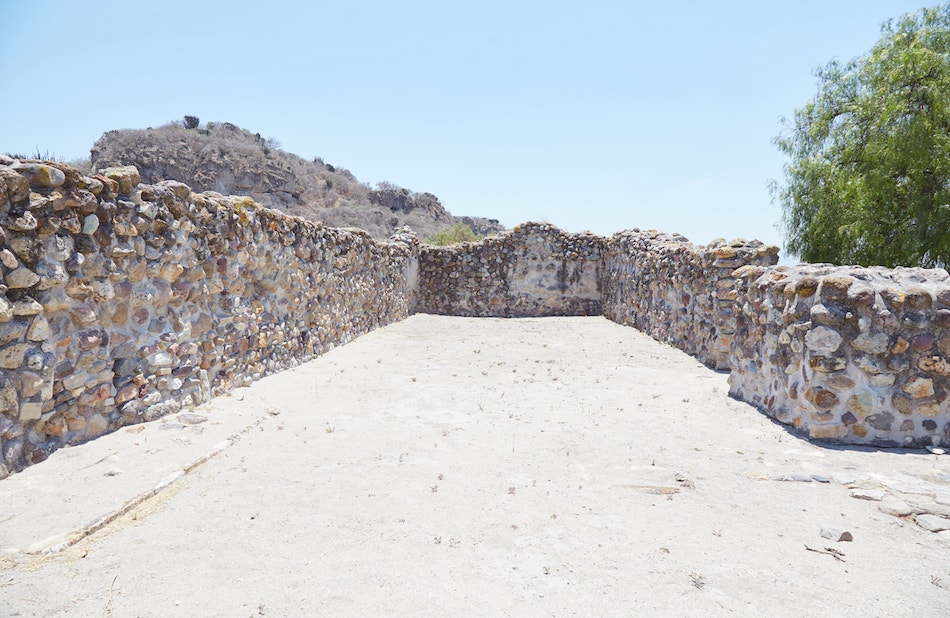
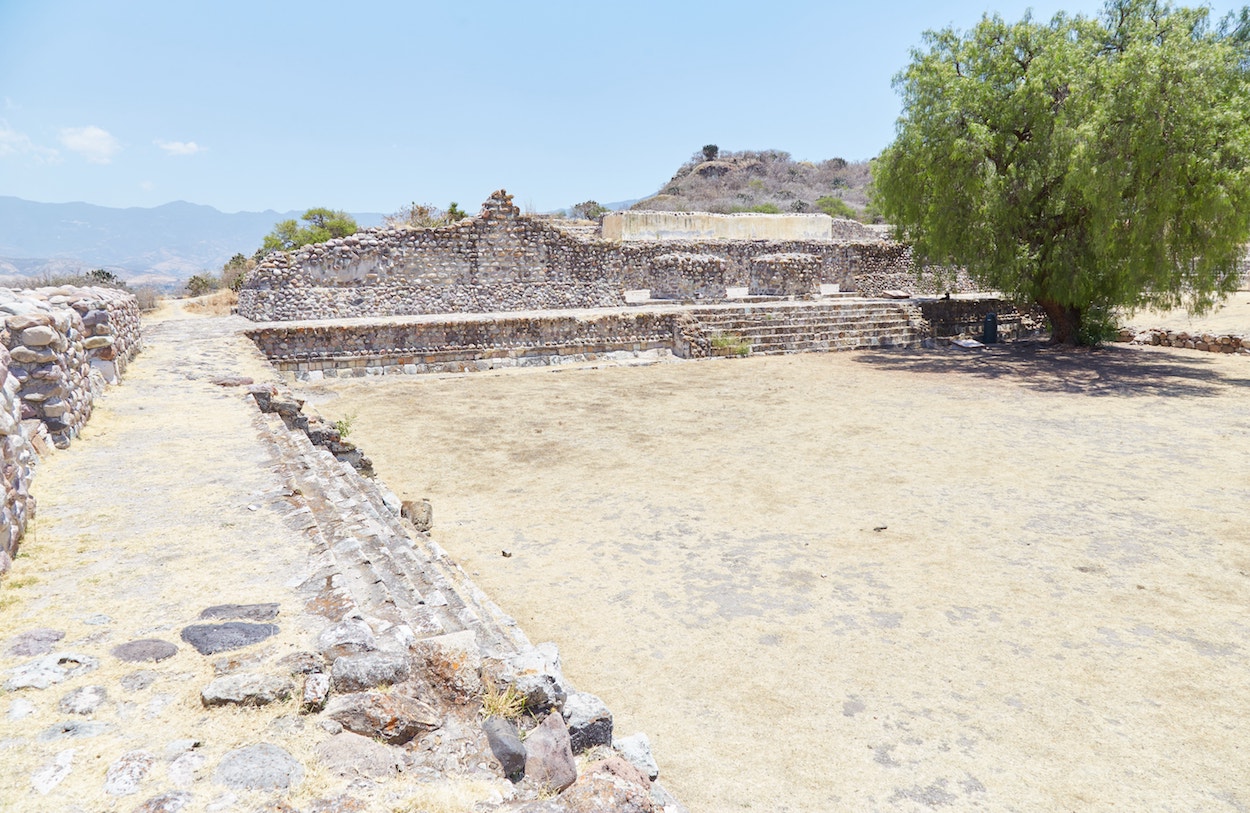
To the west of the court is Patio 1, which, unlike Patio 4, was accessible during my visit. At its north end is the long rectangular Council House, where important meetings involving Yagul’s elite would take place.
And to the west is a former royal palace. Looking southeast from Patio 1’s edge, meanwhile, you can see Patio 5, which remains largely unexcavated. This patio also provides some great views of the natural surroundings, but the best is yet to come.
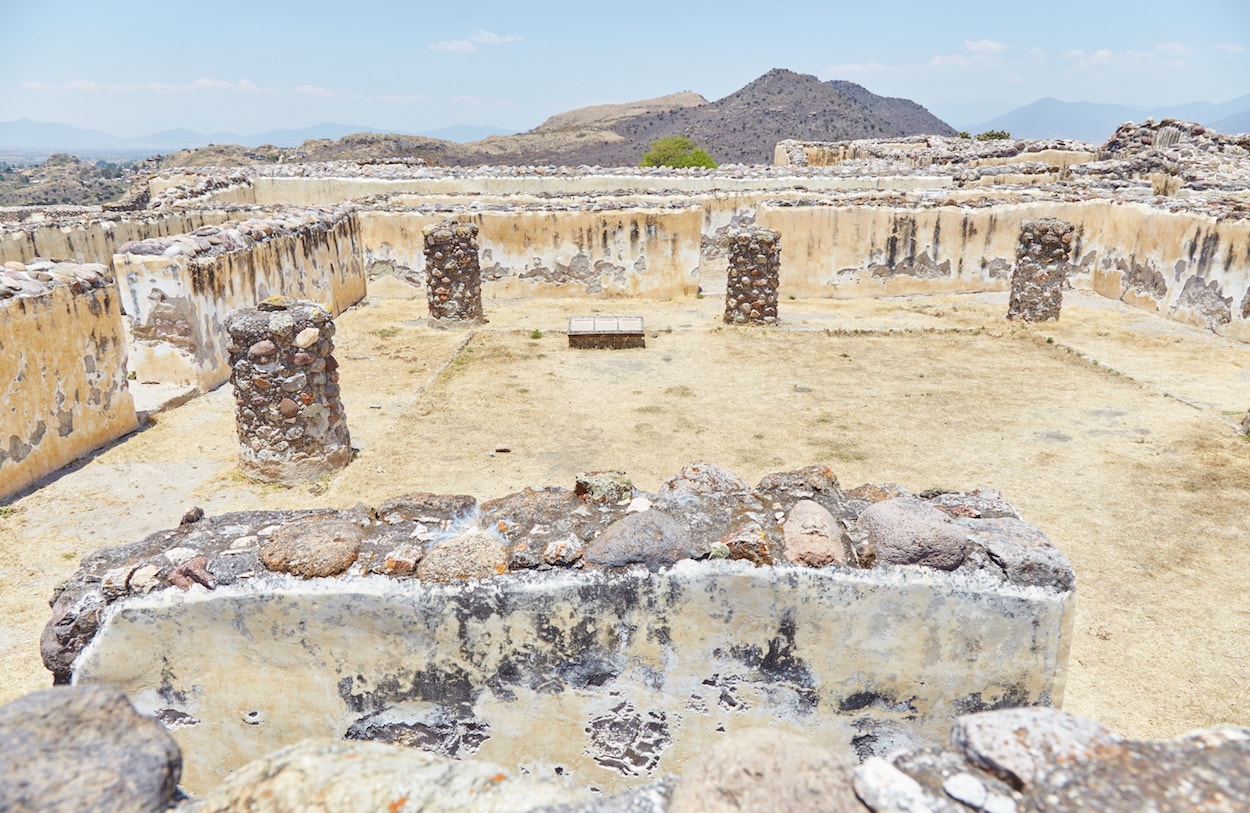
One of Yagul’s most interesting features is the large building known as the Palace of Six Patios. It was an elaborate residential compound which, as the name suggests, was comprised of multiple patios.
Supposedly, it was originally constructed with Mitla’s trademark mosaic friezes, but none of them are evident today.
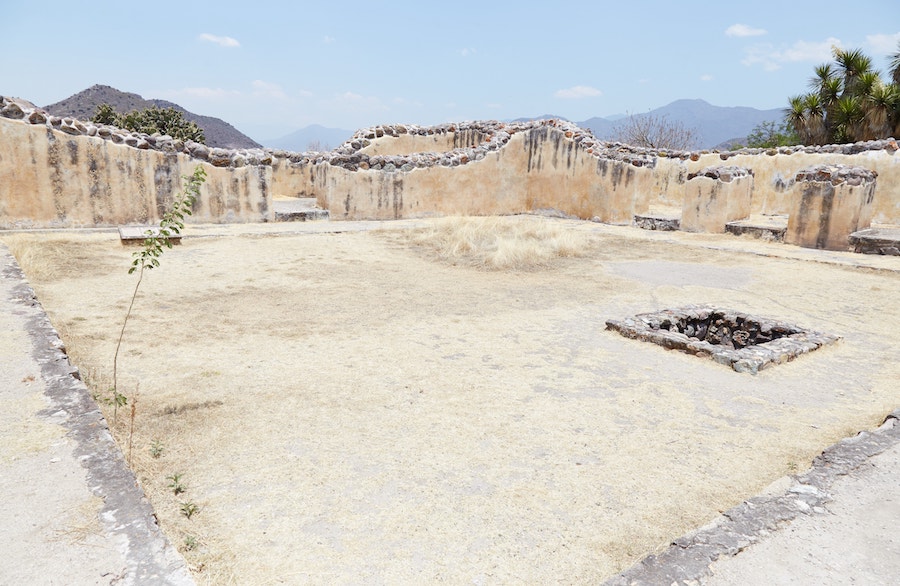


The six patios are lettered from A-F. And while they’re all technically connected, getting from one space to another is far from straightforward. Even with much of its walls and roof missing, the Palace of Six Patios feels very much like a labyrinth.

To the palace’s north is Building U, a pyramid temple built atop a small hill. Located at the highest point of the main residential area, this was where Yagul’s most sacred rituals likely took place.

Next, head east, where you’ll find a trail leading you up a large hill. On the way up, you’ll encounter one of Yagul’s most elaborate tombs which features a well-preserved carved lintel. While locked at the time of my visit, the carvings were clearly visible through the gate.
Also be sure to turn around to take in views of the entire archaeological site. Few ruins in Mexico offer such clear views from above.
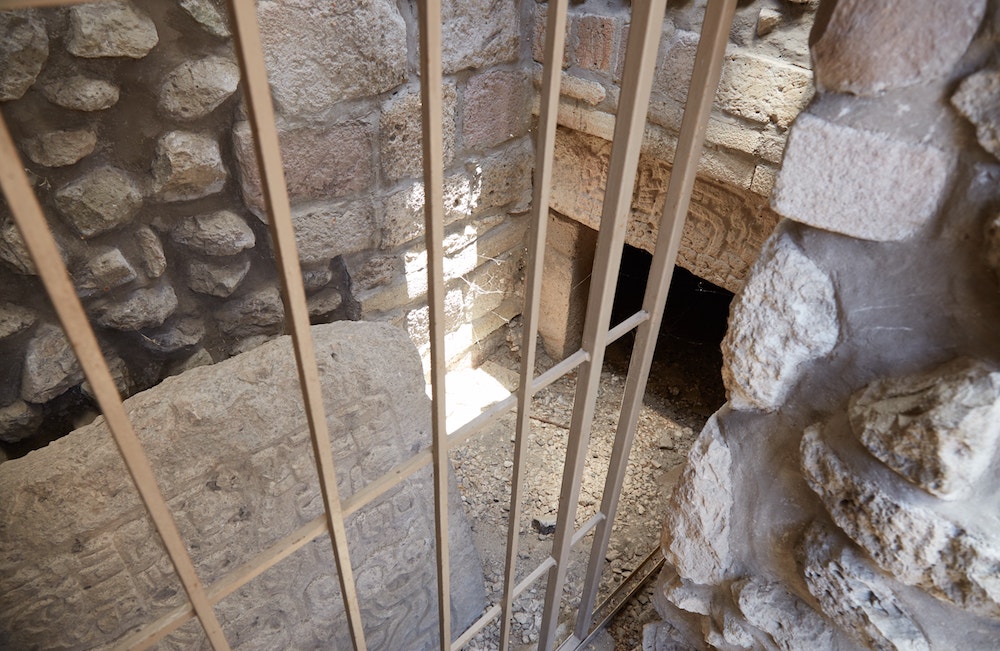
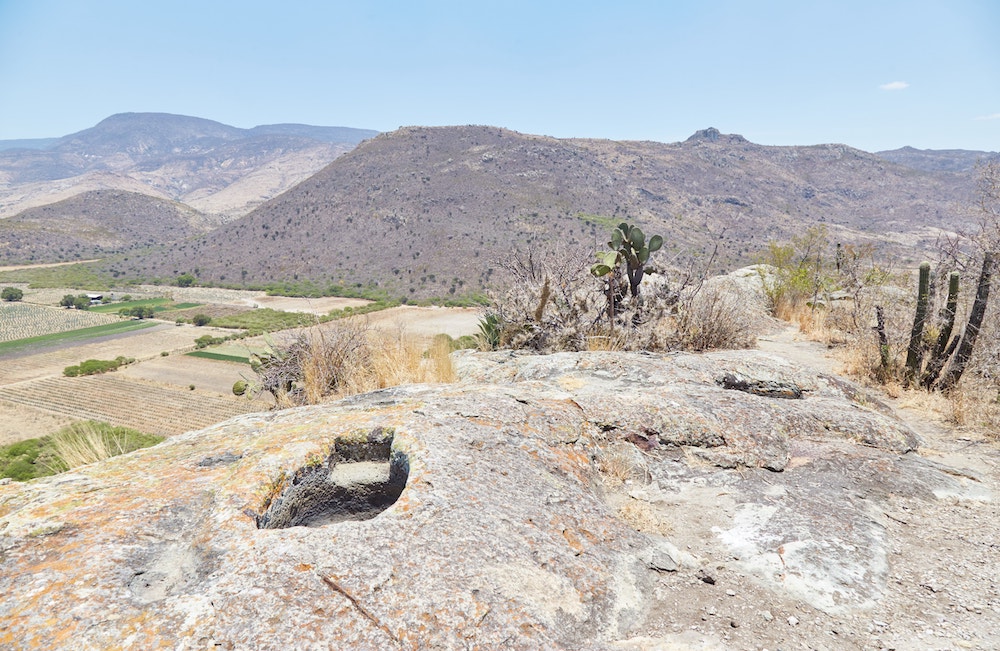

Arriving at the top of the hill, the views of the surrounding countryside get even more impressive. In particular, you’ll see the Valley of Tlacolula as well as the village of Díaz Ordaz.
You’ll also notice a hole carved in the floor of the outcrop which archaeologists believe was a bathtub. While not much remains of it today, the Zapotec fortress here was built around 950 AD and comprised of stone and mud.
While great to explore alone, Yagul is also the type of place you’d take traveling companions who aren’t particularly keen on ruins, as the views from the top are sure to impress all who visit.
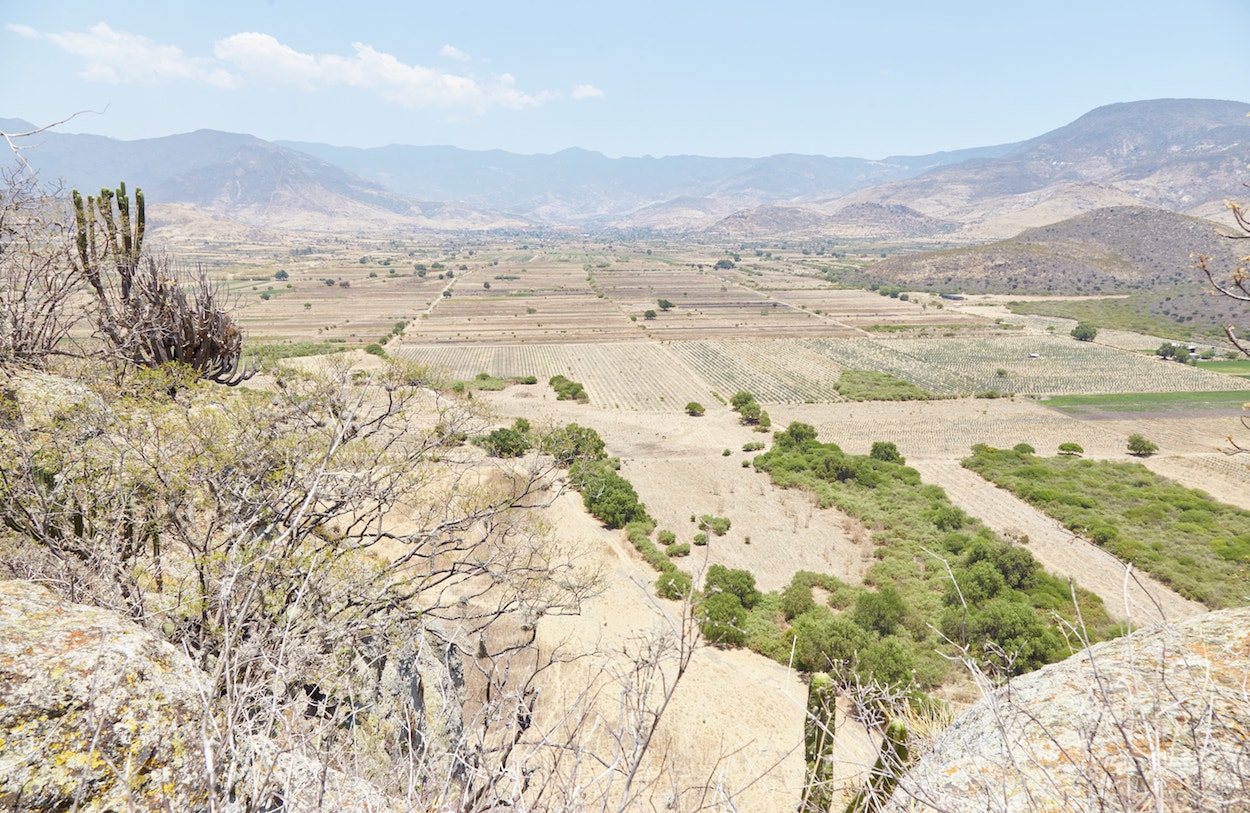
Dainzú
Another 15 km west of Yagul (and 3 km west of the closed site of Lambityeco) lies another hidden Zapotec gem. But Dainzú, whose name translates to ‘Hill of Cactus Plants,’ hit its peak much earlier than Yagul and Mitla did.
The site was inhabited since at least 600 BC, reaching its zenith during the Monte Albán II era (100 BC–200 AD). Dainzú then began its decline around 600 AD – just as Yagul would begin its ascent.
The city was then completely abandoned around 1250 AD as Yagul and Mitla would reach their peak. It then lay hidden for centuries before archaeologists rediscovered it in 1967. And there’s still much excavation work to be done.

The site’s most important structure is Building A, its largest and highest. A multi-tiered structure built into the side of a hill, it was home to multiple temples and tombs, all of which were discovered largely empty.


At Building A’s base, and protected under a metal roof, are a series of dozens of carved slabs. While hard to make out, the reliefs depict ball players, warriors and local rulers.
Some of the original sculptures are not here now, but archaeologists have noted their similarity to the artwork of Monte Albán.



Slightly downhill and to the west are numerous buildings packed densely together. If you’re having a hard time discerning one from another, it’s because they were constructed over the course of at least six different stages.



Dainzú is a rather confusing to explore – let alone explain. But as you walk around the area, you’ll encounter all sorts of staircases, some of which lead to tombs and others to lower levels of the complex. This is a unique visiting experience that you won’t find at other Zapotec sites.

Interestingly, Dainzú’s Ball Court dates from around 800 AD, well into the city’s decline. As the ball player reliefs found at the site predate it, there was supposedly an older court at a different location. For whatever reason, many Mesoamerican cities felt the need to build multiple courts.

Other landmarks to look out for include Tomb 7 (not to be confused with the famous Tomb 7 of Monte Albán), which features a jaguar face carved into the lintel, while its paws wrap around either side. The tomb, discovered already looted, was likely built sometime between 200-600 AD.
Another important structure is the Yellow Temple, recognizable for its color and its pair of columns.

Compared with the other sites along Highway 190, Dainzú may be the least essential of the three. With that being said, it’s still a fascinating site that you won’t regret going out of your way to visit.



Atzompa

Located northwest of Oaxaca and several kilometers north of Monte Albán, Atzompa was actually considered a suburb of the Zapotec capital. Accordingly, it reached its zenith between 650 and 850 AD.
Atzompa did, however, have its own rulers, which archaeologists believe to have been two or more noble families.
The modern town of Atzompa is just a twenty-minute drive from central Oaxaca, and is now a popular destination during Dead of the Dead. But due to various factors, the ruins can be a bit tricky to reach, whether you’re coming by public transport or private car.
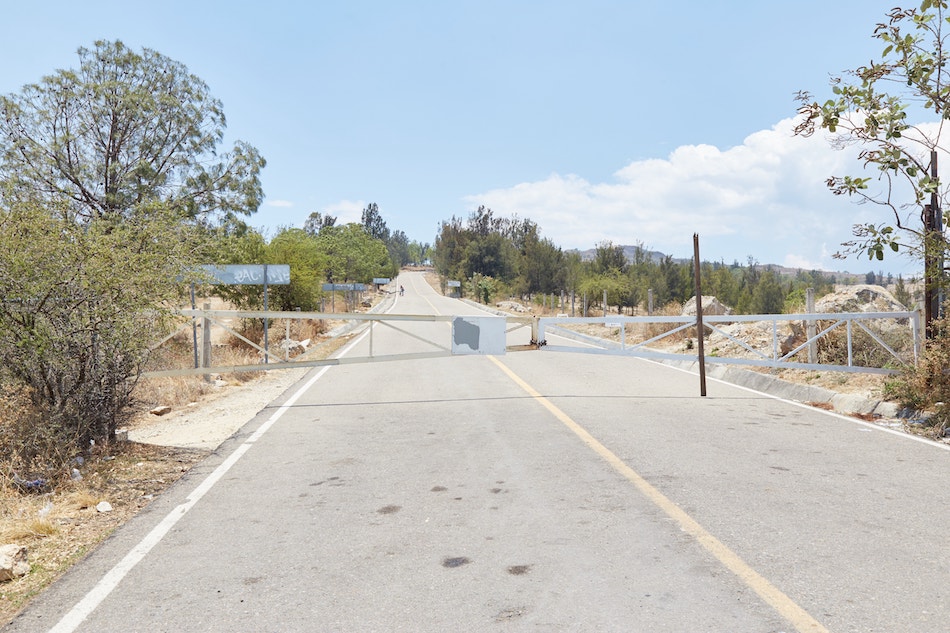
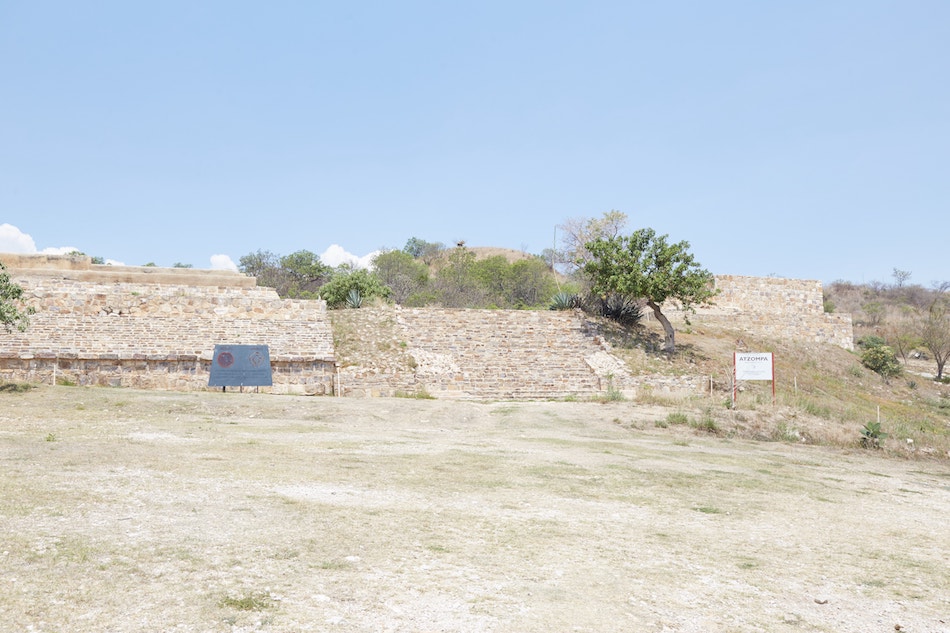
At the time of my visit, a gate prohibited cars from proceeding further down the road leading to the site, leaving visitors with no choice but to walk thirty minutes. Be sure to check the full details on reaching Atzompa from central Oaxaca below.
While considerable effort is required to reach them, the Atzompa ruins are at least free to enter.
Passing the modern entrance, you’ll encounter a wide platform with a staircase in the middle, which likely marked the city entrance in ancient times.
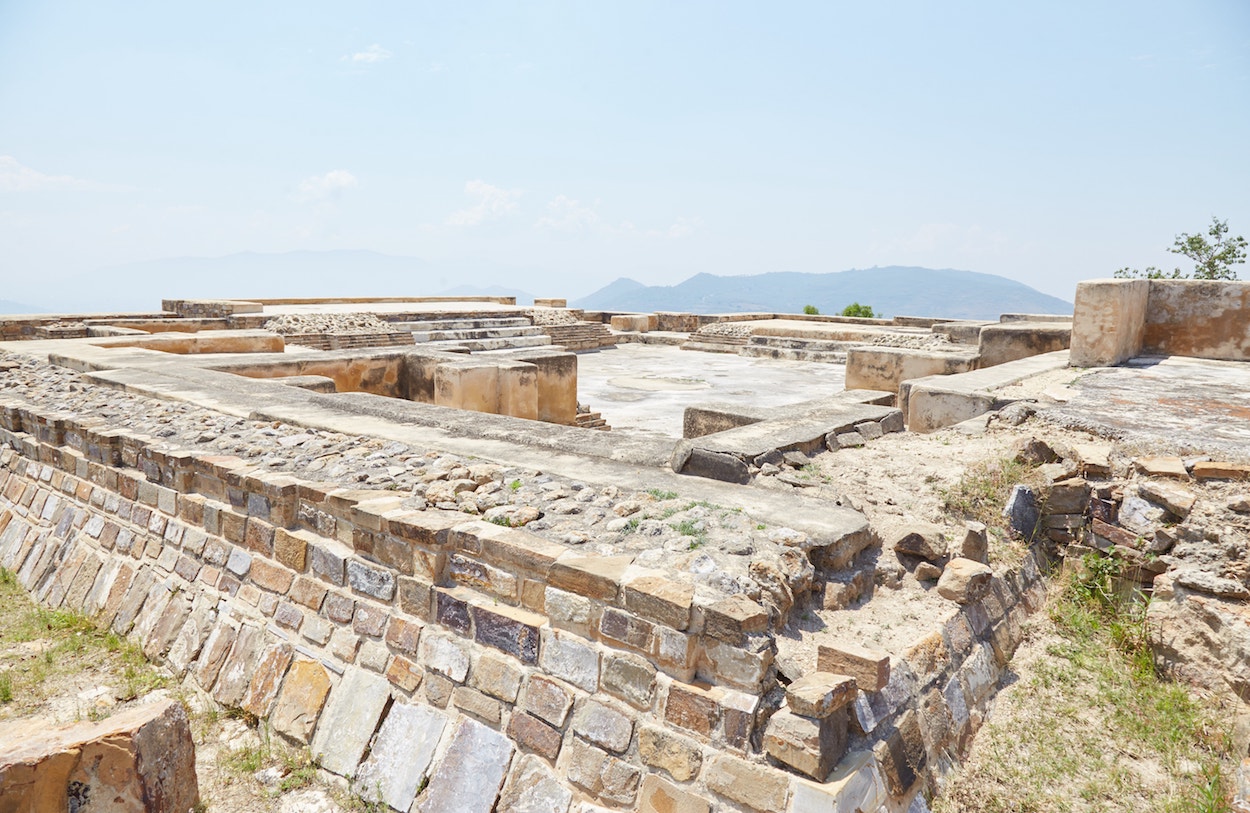
Ascending the staircase, you’ll reach a plaza, with what’s known as the East House on your left. Archaeologists believe it was where Atzompa’s upper-class families resided, and its sunken stucco-covered patio remains in great condition.
Unfortunately, at the time of my visit, visitors could only see the house from the outer edge. This would be understandable if there was some type of excavation work taking place, but that did not seem to be the case.
According to signage placed all over Atzompa, many parts of the ruins were simply blocked off due to ‘prevention measures.’ All of these areas were completely outdoors, while Atzompa probably doesn’t get more than a handful of visitors a day.
If you’re planning a visit, these nonsensical, unscientific measures may be something you have to deal with, but hopefully the hysteria has died down a bit by now.

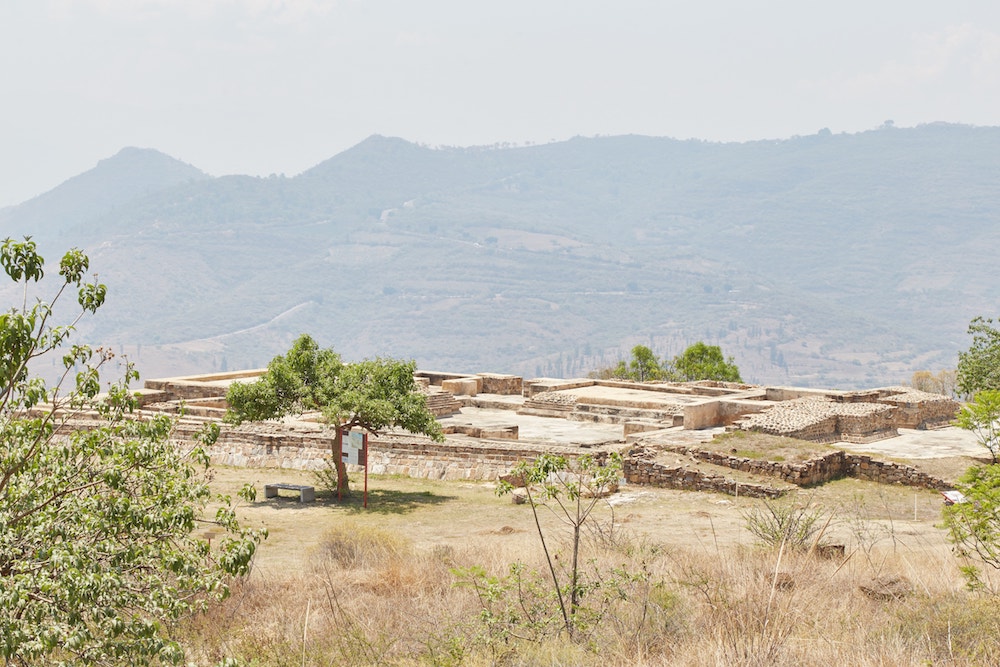
Moving on, you can walk up the central path taking you further uphill. And on the way, you’ll see the remnants of a local stone quarry.
Compared to other cities in the ancient world to which workers had to lug large stones across long distances, having a quarry right within the city was obviously a major convenience.
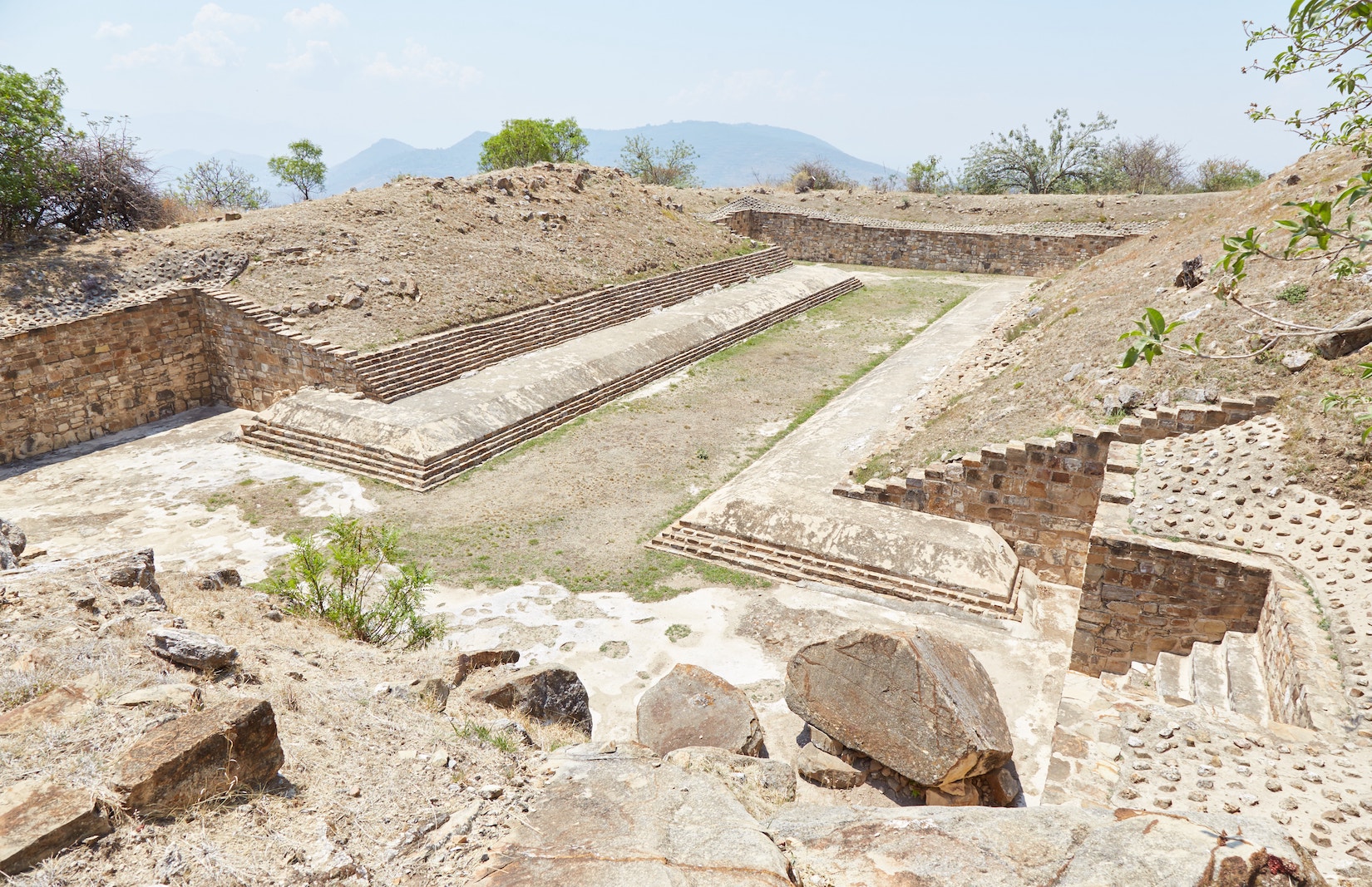
As you make your way further up, you’ll pass by the Ball Court, which remains in great shape. Interestingly, archaeologists have counted this one as one of Monte Albán’s total six, making it the largest in the capital. It measures out to 45 x 22 meters.

Before long, you’ll find yourself in the main plaza, Plaza B. Over to your left, you’ll see a long stepped platform known as Building 8, which separated Plazas B and C.
While largely unexcavated, you can go and check out Plaza C, from which you can enjoy a view of Monte Albán on the opposite hilltop.
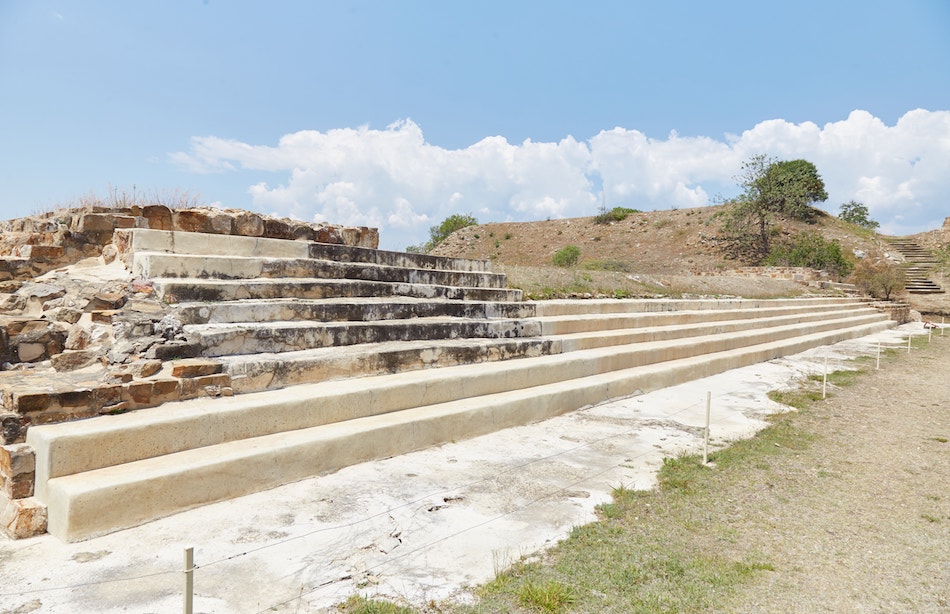

Back at Plaza B, on the opposite side is a funerary building in which elaborate tombs were discovered. The centerpiece of the plaza, meanwhile, is a large, long pyramidal structure.
Heading to the other end of the plaza, you’ll see another elaborate residence known as the House of the Altars. It too features a sunken patio with well-preserved stucco rooms. While going inside was forbidden during my visit, one could get a pretty clear view from above.
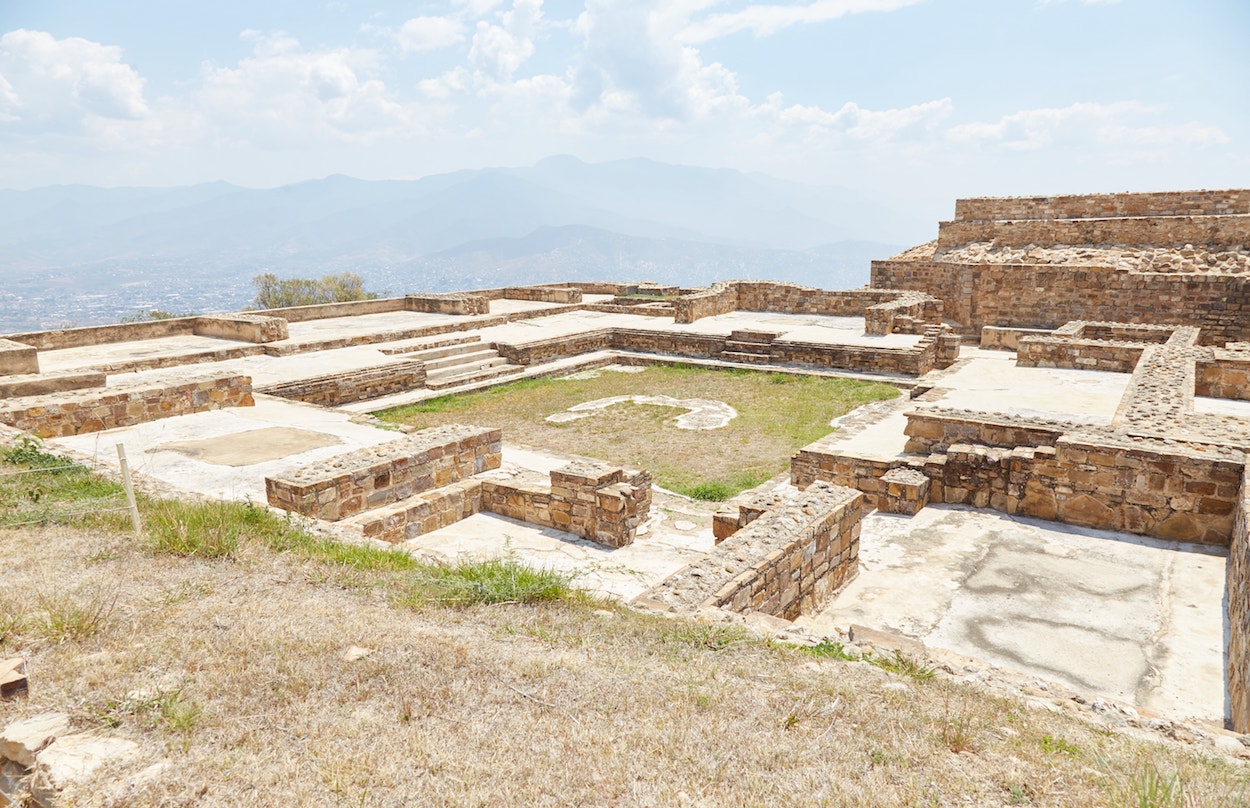
Around Plaza B, there seemed to be several more areas, including a path taking people up the side of the main pyramid, that would normally be accessible to visitors. Sadly, they were all blocked off for ‘health reasons’ during my visit, but hopefully you’ll have better luck.
With nowhere else to go, I followed a staircase near the House of the Altars which took me to a spacious platform situated slightly below the main plaza.
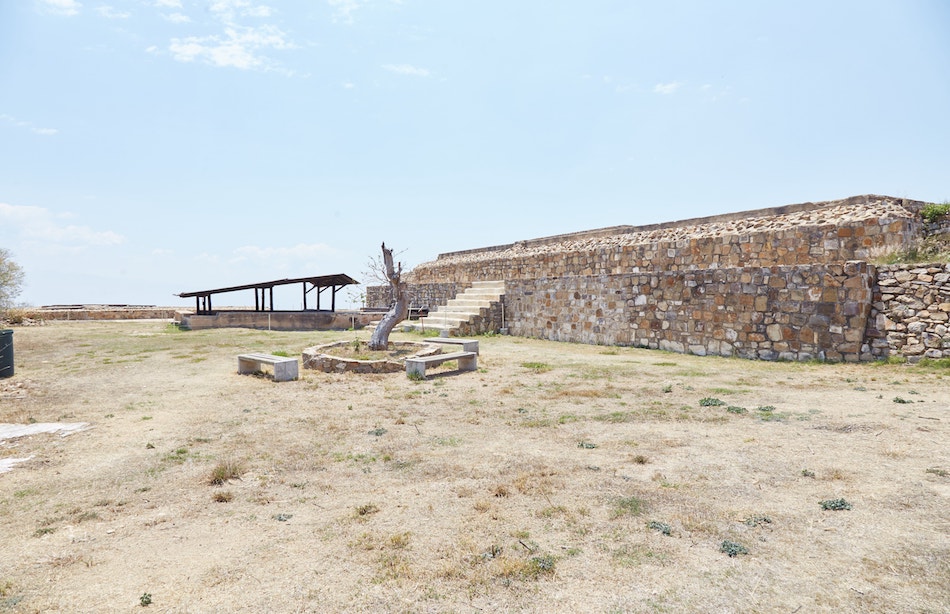
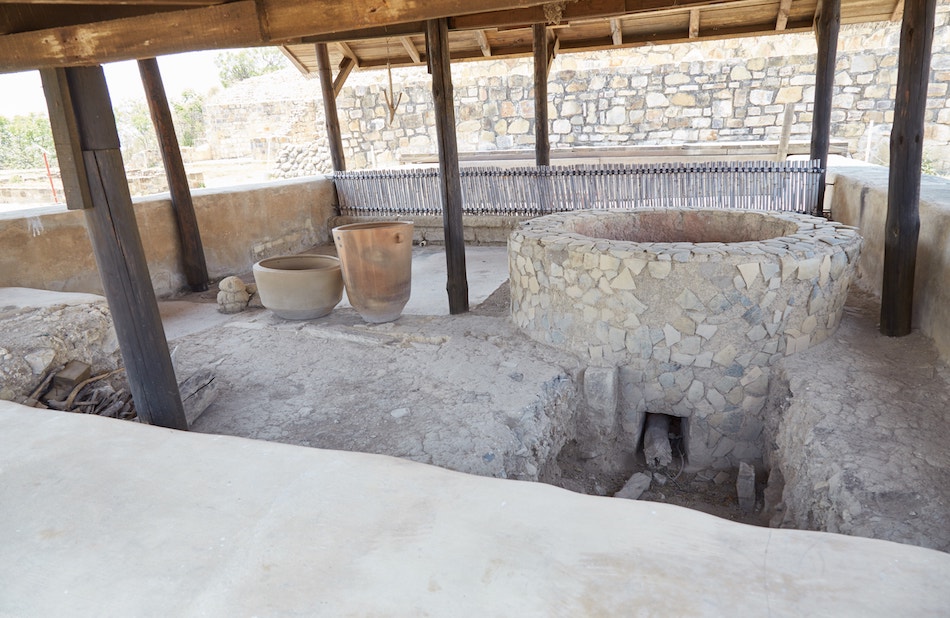
This area was home to the kitchen used to prepare food for the House of the Altars’ inhabitants. What’s more, is that a ceramics workshop was discovered here as well – thus far the only one found at Atzompa.
Fascinatingly, the inhabitants of modern Atzompa still use these exact same types of stoves.
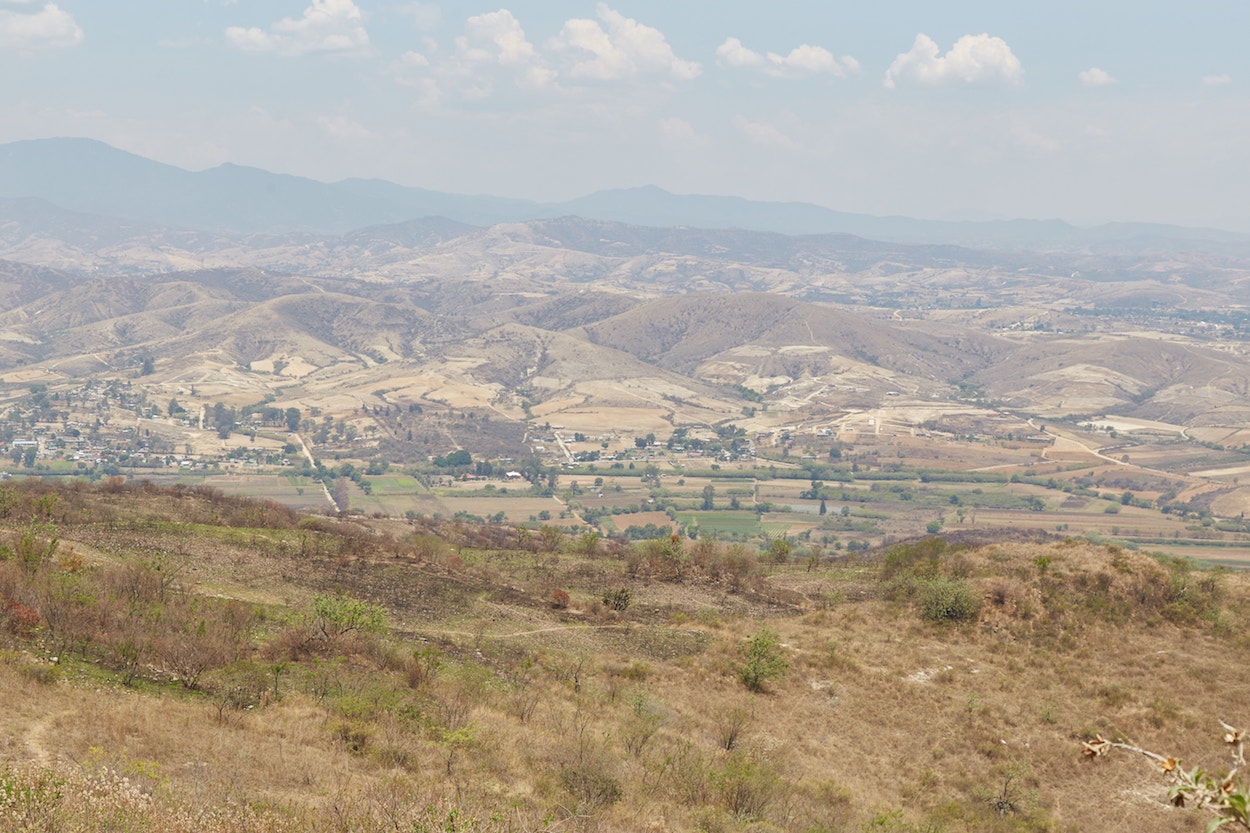
Elsewhere around the patio, you can see more well-preserved structures, some of which were likely part of the House of the Altars. And be sure to turn around for great views of the surrounding countryside.
When finished, an alternate path then leads you back toward the site entrance.
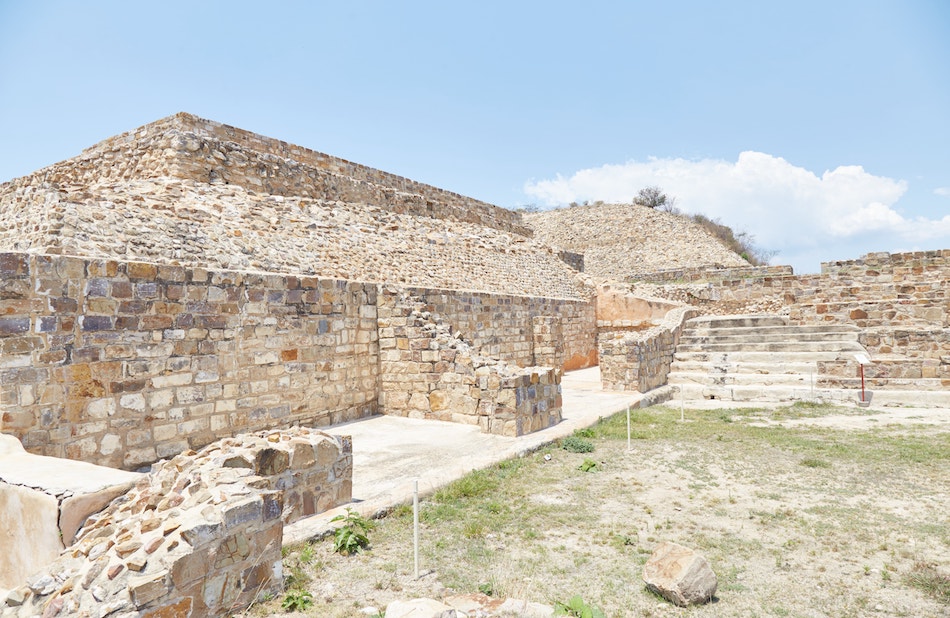
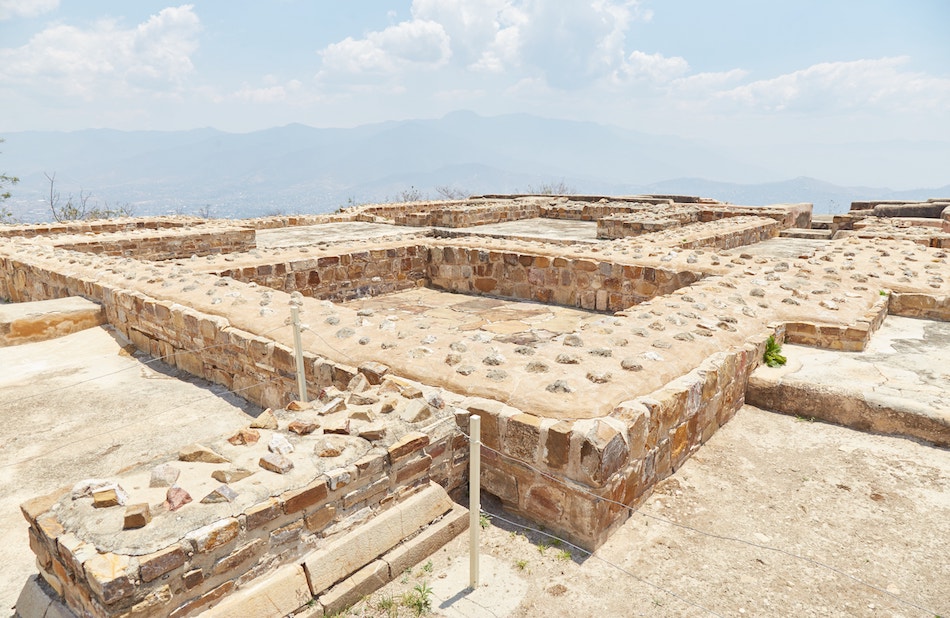
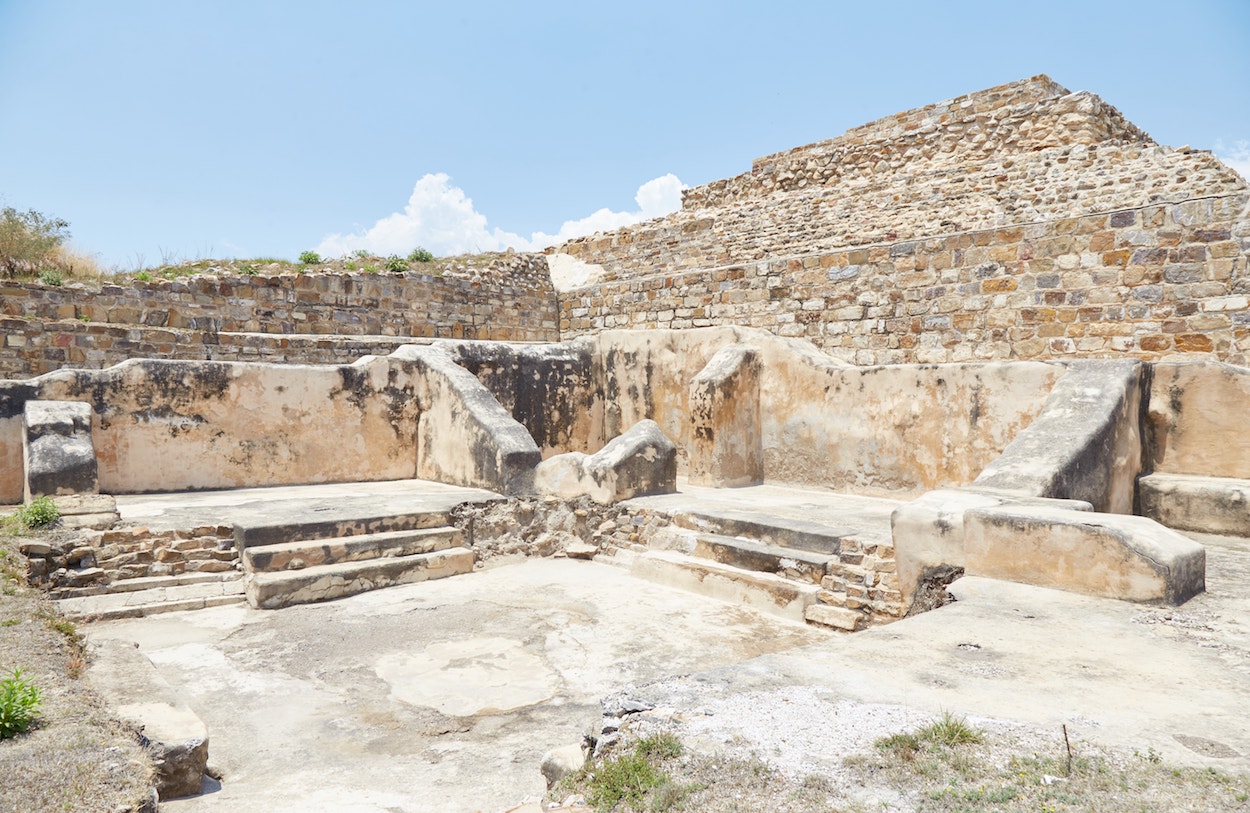
Additional Info
Oddly, despite the close proximity of Mitla, Yagul and Dainzú, which are all located along Highway 190, there are no tours available that can take you to all three. This tour, which includes Monte Albán, Mitla, and Dainzú, seems to be the closest thing.
To visit all of the Highway 190 sites together, you’ll either have to rent your own car or visit them by bus, which is indeed possible.
While Mitla is closed on Mondays, as of autumn 2023, it’s open from 10:00-16:00 on Tuesday-Saturday and from 10:00-14:00 and Sundays. Both Yagul and Dainzú, meanwhile, are open daily from 10:00-16:00.
Fortunately, visiting all three is much easier now compared to the time of my visit, when they were all operating on a drastically reduced schedule. Nevertheless, you’ll still be on a tight schedule and you’ll want to arrive at Mitla as soon as the ruins open.
Also be sure to check the official INAH sites for Mitla, Yagul and Dainzú to confirm the latest opening hours before your visit.
First, you’ll want to get to Mitla from Oaxaca. If you’re staying near the Zócalo, you can find buses for Mitla at the Central de Abasto station, also known as the ‘2nd Class Bus Station.’ (It’s also from here that you can catch a shared taxi to Atzompa on a different day.)
For those staying further north, you can find transport on Highway 190 a little bit east of the baseball stadium. While I’d read about public buses, I went to Mitla on a few different occasions and only ever saw shared taxis.
Wait around long enough and you should see a car with ‘Mitla’ written on the window. The standard price for the hour-long trip is $40 MXN per person.
Finished with Mitla, it’s time to head back west to visit Yagul. You can catch a coach bus at Mitla’s bus station located on 179, about 7 minutes on foot from the shared taxi drop-off point. Or you could take a shared taxi, though you may have to wait until it fills up.
As you board the bus, tell the driver that you want to get off at Yagul. After just about ten minutes into the ride, the driver will let you off, after which it’s a 2 km walk to the ruins.
After visiting Yagul, my plan was to return to the highway and simply wait for a westbound coach bus or shared taxi to Dainzú, another 20-minute ride.
But as I was walking back toward Highway 190, a Mexican family leaving Yagul around the same time slowed down and told me to get in their car. The friendly family was free for the rest of the day, and when I told them I planned to visit another archaeological site, they decided to visit with me.
Even had I not been lucky enough to meet this family, I think getting to Dainzú and then back to Oaxaca via local transport would’ve been fairly straightforward.
As mentioned, there’s yet another site called Lambityeco in between Yagul and Dainzú, though it’s been closed altogether for quite some time.
Another way to approach visiting all of these ruins would be to visit Mitla together with Hierve el Agua (either independently or with a tour) on one day before visiting Yagul and Dainzú on another.
Visiting Atzompa by tour is possible, such as this one which also includes Monte Albán.
Otherwise, reaching the Atzompa ruins from Oaxaca via public transport is not terribly complicated, though it does require a few different steps and possibly a lot of walking. Even if you have a car, it may be better to use public transport for reasons we’ll cover shortly.
First off, you will have to go to the Central de Abastos, or ‘2nd Class Bus Station’ in the southwest part of the city to find a bus or shared taxi. I was lucky and just happened to find a shared taxi with ‘Atzompa’ written on it within a few minutes. But if you have a hard time, simply ask a local.
The ride to Atzompa just takes twenty minutes or so. The taxi will not go to the ruins, however, but only to the modern town of the same name. The ruins are a long walk from the town center, but tell your driver your destination and he’ll drop you off near the stand for local moto taxis (tuk tuks).
Tell the moto driver you’re headed to the ruins and he should be able to take you there directly for around 15-20 pesos.
As mentioned above, during my visit, there was a gate blocking the road well before the actual ruins. Understandably, this is where my driver had to drop me off. It was then a 30-minute walk under the hot sun to reach the ruins.
I have no idea if the road is normally blocked off or not, but I didn’t see any parking spaces near the gate. So if you come with your own car, you’ll have a difficult time figuring out where to leave it. It may be possible to drive up to the ruins from the opposite end of the road, but you’d have to consult with a local.
Leaving the ruins, I asked a staff member which direction would be quicker to return to town in order to find the taxis to Oaxaca. And he told me to go the same way I’d come up.
Repeating the long walk back to the gate, I wasn’t surprised to not see any motos or taxis in such a remote area. I then walked another twenty minutes or so to the nearest portion of the main road, from which I easily caught a moto back to the center. From there, I found another shared taxi for Oaxaca.
While Atzompa has free entry and transport there is very cheap, it still requires quite a bit of effort to reach. That’s why it was especially frustrating to see so many parts of the ruins blocked off.
At the time of my trip, Atzompa was only open on weekends, but it fortunately seems like the ruins are now open daily from 8:00-17:00. Before your visit, be sure to check the official INAH site here.
Oaxaca is not a very large city, and as long as you’re staying relatively central, you can easily get around on foot. Many look for accommodation near the central square, or Zócalo, which is indeed a good location. Popular hotels here include Hotel Casona Oaxaca and La Catrina del Alcala.
If you can, an even more ideal location than the Zócalo would be a bit further north near the Templo de Santo Domingo de Guzmán or El Llano park. While still very central, I consider this to be a nicer area than that of the Zócalo, (Oaxaca is so compact, though, that the two areas are just 15 minutes apart on foot.)
A popular affordable hotel around here is Posada Don Mario.
Alternatively, the neighborhoods of Xochimilco and Jalatlaco are very popular places to stay and are within walking distance of the historical center. A highly-rated hotel in Xochimilco is Hotel Fortin Plaza, and in Jalatlaco, Hotel Cazomalli Oaxaca.
Further north, Reforma is another popular district. Mision de Los Angeles would offer easy access to all of the city’s main areas.
